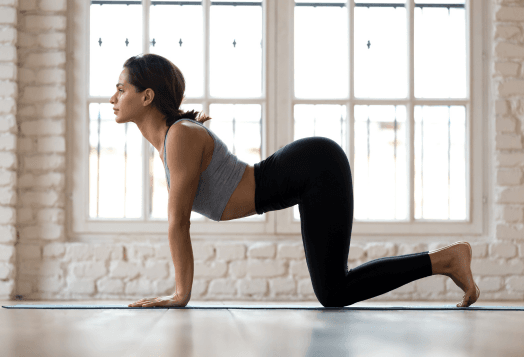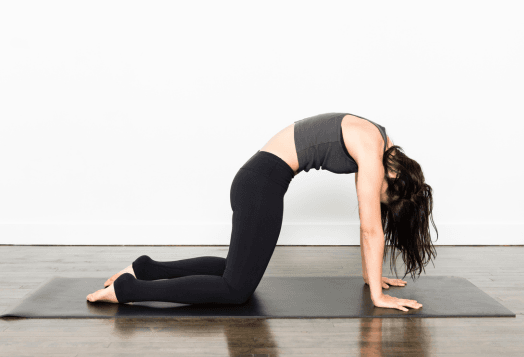Woke up with a crick in your neck again? Or maybe hours of Zoom calls are taking a toll on your spine? Neck pain doesn’t have to be your new normal. From text neck and cervical stiffness to poor posture, the right yoga for a stiff neck can bring fast relief, no meds, no machines, just movement.
Your Neck Isn’t the Problem, Your Posture Is
Let’s get real: most neck pain isn’t about injury. It’s about lifestyle. Slouching over laptops, binge-watching in bed, and scrolling Instagram in weird positions cause tension to build up in your cervical spine.
When your neck is always forward, muscles like the upper trapezius and levator scapulae tighten, leading to chronic discomfort and even cervical spondylosis in the long run.
That’s where yoga exercises for cervical spondylosis come in. They aren’t just stretches, they’re a reset button for your spine.
Why Yoga Eases Neck Pain (And Fixes the Problem)
The truth is, painkillers numb the pain, and neck pillows only offer temporary comfort. Yoga tackles the root cause.
Here’s what makes yoga for cervical pain so effective:
It melts tension with slow, mindful movements that calm overworked muscles.
- It corrects posture by gently realigning your cervical spine and opening up a tight chest, much like hip-opening poses relieve lower back tension.
It builds strength in key support muscles like the trapezius and levator scapulae, so pain doesn’t keep coming back.
It’s perfect for tech neck, easing pressure caused by long hours of looking down at screens.
By regularly practising yoga exercises for cervical spondylosis and improving neck mobility, you’re not just relieving pain, you’re breaking the cycle for good.
7 Yoga Neck Stretches That Actually Work
You don’t need a mat, props, or even a change of clothes. These simple yoga poses for neck pain can be done at your desk, on the floor, or even during a Zoom break.
1. Neck Tilt (Side Bend)

How to do it: Sit or stand tall. Gently lower your right ear toward your right shoulder, keeping the shoulders relaxed. Hold for 20–30 seconds, then switch sides.
Why it works: This move directly targets the upper trapezius, the muscle that tightens from stress and screen time, releasing stiffness on each side of your neck.
2. Neck Rotations

How to do it: Slowly turn your head to look over your right shoulder, pause, then rotate to the left. Repeat 5–8 times with control.
Why it works: These smooth side-to-side movements increase flexibility and blood flow while relaxing the often-overlooked muscles along your neck and jawline.
3. Chin Tucks

How to do it: Sit upright, eyes forward. Pull your chin back slowly (like you’re making a double chin), hold for 5–10 seconds, and release.
Why it works: This underrated move strengthens the deep neck flexors that support your head, which is great for posture correction and counteracting ‘tech neck.’
4. Shoulder Rolls

How to do it: Inhale, shrug your shoulders up. Exhale, roll them back and down. Repeat 10 times.
Why it works: Loosens tight traps and upper-back muscles that often contribute to neck pain, especially after hunching at a desk or scrolling for hours.
5. Cat-Cow Pose


How to do it: Start on all fours. Inhale and arch your spine (cow), lifting your chest and tailbone. Exhale and round your spine (cat), tucking your chin to your chest. Flow for 5–8 rounds.
Why it works: Mobilises your cervical and thoracic spine and is one of the most effective asanas for neck pain relief, similar to yoga for knee pain.
6. Thread the Needle
How to do it: Start on your hands and knees. Slide your right arm under your left, resting your shoulder and head on the floor. Keep your left hand where it is or stretch it forward. Hold for 30 seconds, then switch sides.
Why it works: Releases tension in the neck, shoulders, and upper back—perfect for easing stiffness after long hours of sitting.
7. Ear-to-Shoulder Assisted Stretch

- How to do it: Tilt your head toward one shoulder, then gently rest the same-side hand on top of your head to deepen the stretch (no pulling). Hold for 20–30 seconds.
- Why it works: A simple, effective way to release built-up tension using mindful yoga neck stretches. Even five minutes of these stretches a day can help reverse the effects of poor posture.
Tips to Practise Neck Yoga Without Risk
Your neck is one of the most sensitive areas in your body. So when practising neck yoga poses, slow and steady always wins. Here’s how to stay safe:
Go slow and stay aware: Move gently through each pose. If you feel any sharp pain, discomfort, or dizziness, stop right away. Pain is your body’s way of saying something’s not right.
Support your neck with props: If certain poses feel too intense, place a folded towel or cushion under your neck or head for extra support. Comfort is key.
Skip deep backbends and jerky moves: Avoid poses that strain the neck, especially if you’re new to yoga or dealing with chronic issues. Sudden movements can make things worse.
Maintain a neutral spine: Keep your back straight and shoulders relaxed during each pose. Avoid slouching or over-extending your neck.
Talk to your doctor if needed: If you’ve had a recent neck injury, experience vertigo, or have conditions like a herniated disc or arthritis, it’s best to get medical clearance before starting neck stretches.
Remember: A pain-free neck starts with mindful movement guided by yoga instructors. Tune in to your body and don’t push beyond your limit.
Disclaimer: This article is for informational purposes only and is not a substitute for professional medical advice. Always consult your physician or a certified yoga therapist before starting a new exercise routine, especially if you have a pre-existing neck condition or recent injury.




